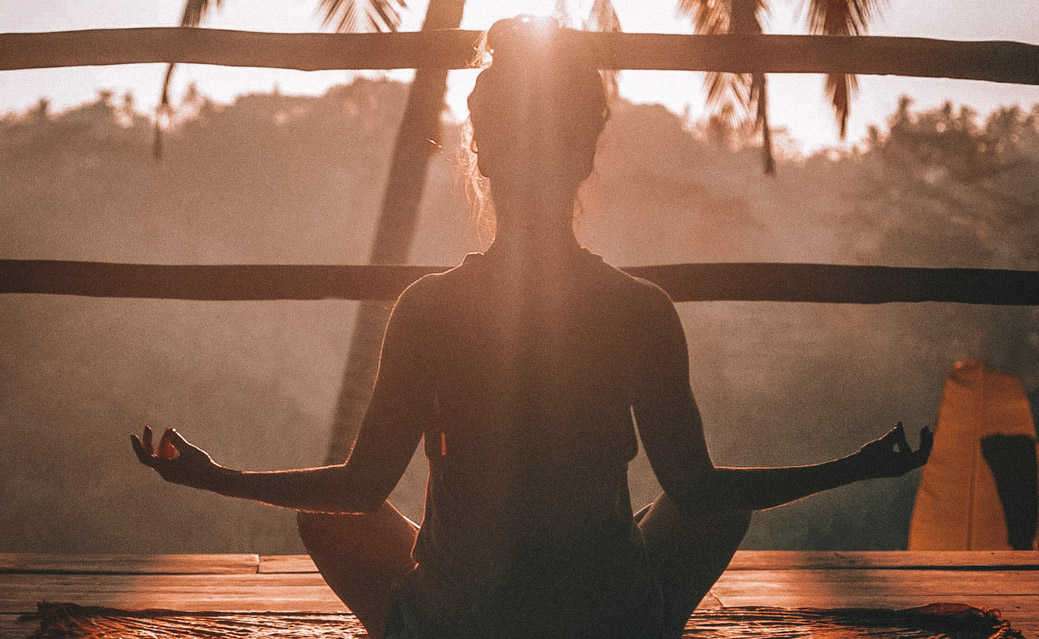Lecture Me! On yoga as development for Africa
After the fall of a once tranquil, cosmopolitan island, the introduction of yoga arrived to restore its beauty.
“Perhaps you are familiar with the Lion King?” Professor Sarah Hillewaert jokes as she begins her PowerPoint, displaying her latest discoveries to an attentive audience for the first time since the onslaught of the pandemic. As part of the Mississauga Library’s virtual Lecture Me! series, Professor Hillewaert speaks on the recent introduction and widespread development of yoga in the most poverty-stricken areas of Africa.
An associate professor at the University of Toronto Mississauga, Professor Hillewaert is a linguistic anthropologist who studies the intersections of language and youth culture, religion, and globalization. Her latest project expands these interests to include development and humanitarianism in Africa—with a focus on health and wellness. For the last 20 years, her research has highlighted some of the biggest communicational discrepancies throughout Eastern Africa. Lately, she has applied her knowledge to the rise of yoga, which has transformed the Kenyan lifestyle.
In 2001, Professor Hillewaert studied youth language and hip-hop in Nairobi, Kenya’s capital. Seven years later, her focus switched to the Island of Lamu, a predominantly Muslim Island situated on Kenya’s northern edge. Lamu was the centre of the Indian Ocean trade network in the 14th century. In fact, the island was a very successful international port with longstanding connections to Southeast Asia. These influences permeated Swahili culture until the mid-19th century, when the island became marginalized once trade shifted to Zanzibar. This led to decolonization, which caused Kenya to take ownership of Lamu. As trade declined, the main source of income became Western tourism. Even this revenue was not enough to keep the island from facing serious consequences, causing it to stray from its once prosperous roots.
“It became a place where time stood still,” explains Professor Hillewaert of this barren, urban area. Seemingly paradoxical, pictures told the story of a once vibrant town. “What does it mean to be young in a context like this?”
Her book, titled Morality at the Margins: Youth, Language, and Island in Coastal Kenya, Professor Hillewaert explores this economic termination and the landscape that no longer contributes to the success of local youth. She searched for ways that allowed the youth of Lamu to maintain respect for their cultural and religious values, while also negotiating a future for themselves. Ten years later, follow-up research showed a heightened interest in yoga. Yoga retreats and festivals—primarily targeted to tourists vacationing at Lamu’s wealthy neighbouring village of Shela—had gained prosperity in the mid-70s due to the Peponi Hotel, a popular attraction situated in the Indian Ocean off the North Kenyan coast.
While Kenya has long been a safari destination, yoga is shifting its reputation as the wellness destination of Africa. According to the Global Wellness Institute, the wellness tourism market will represent 18 per cent of all global tourism by 2022. While wellness destinations were previously linked to luxurious spa retreats, tourism studies now describe wellness as a more integrative phenomenon, where the spiritual dimension is just as important as the physical one.
Professor Hillewaert speaks on how her friend Monika Fauth, a yoga teacher and initiator of the Lamu Yoga Festival, spearheaded her own research. Given the natural healing process that yoga elicits, it was Fauth’s dream to turn the island into the “Bali of Africa.” In 2007, she opened a yoga studio at a boutique hotel and wellness centre called Banana House. She also became an Art of Living teacher and a Sri Sri yoga instructor. The community praises her work as Muslim children who suffer from poverty have shown increased self-esteem and confidence through the practice of yoga.
Fauth believes that the gift of yoga offers Kenyan children an escape from their daily struggles and gives them a newfound purpose in life. But she isn’t the only advocate of yoga in Lamu. Paige Elenson is the co-founder and executive director of the Africa Yoga Project (AYP), a movement that empowers the Kenyan youth to “learn, contribute, and change their lives through the transformative power of yoga.” The initiative offers classes in the most underprivileged communities of Nairobi and trains children to teach yoga to their communities. This spreads wellness awareness and provides Kenyan children with a sustainable income. The AYP has already shown much promise.
By tapping into the wellness trend with its authentic learning experiences, Lamu has been given the opportunity to revitalize its economy—aiding in the prosperity of its land after decades of financial decay. The customs throughout Africa are facing major restructuring, most definitely for the better. With sweating once being regarded as a sign of lower status, these communities have adopted a more positive outlook.
Wholeness and unity are integral to Kenya’s diverse landscape; they add value to the tourist experience while resurrecting the country’s lands. Professor Hillewaert emphasizes the importance of further research into the project’s benefits. She believes that the project could be catalytic for transforming Kenya’s youth through teaching, leading, and sharing.

